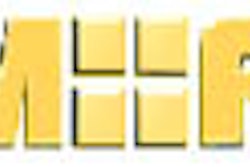Canadian radiologists are happy with a cash infusion of $1.5 billion Canadian dollars ($1 billion U.S.) into their healthcare system for the purchase of new diagnostic equipment, but they are worried that the money may not be spent effectively.
Last week, national finance minister John Manley unveiled a $34.8 billion ($23.3 billion U.S.) aid package designed to improve Canada’s faltering healthcare system. The $1.5 billion ($1 billion U.S.) allocation for the Diagnostic/Medical Equipment Fund "will provide much-needed investment in the area of diagnostic services," according to a statement issued by the Canadian Association of Radiologists (CAR).
But CAR officials met with Manley Tuesday to discuss what they see as potential failings of the new fund, including the possibility the money will be misspent.
CAR’s misgivings about the new fund are based on previous experience: In 2000, a similar billion-dollar fund was set up by the government, yet only 60% of it was actually used to buy new imaging equipment, CAR wrote in a brief to the finance minister. The rest of the funds went for lawn tractors, floor scrubbers, and woodworking, according to CAR.
The problem was that the earlier fund had no strings attached, said Normand Laberge, CAR's CEO. In Canada’s public health system, financing is shared between the national government and the 13 provincial and territorial governments, but the provinces and territories decide how healthcare dollars will be spent.
"Technically speaking, they (provincial and territorial governments) could build a road with it if they wish," Laberge told AuntMinnie.com.
CAR urged Manley to place restrictions on the use of the new funds, and to demand accountability from the regional governments. The organization added that replacing machines a decade or older should be a priority. For example, about one in three nuclear medicine gamma cameras will have to be shut down in the next few years due to obsolescence. Also, PACS and RIS networks should also be a priority, CAR said, in order to improve the health system’s reliability and flexibility.
In fact, using today’s top-end equipment in a film-based system may be wasteful. "If a hospital wishes to use advanced devices such as the electron beam CT scanner and the high-field open MRI, operating in a non-PACS environment is difficult and costly," CAR stated.
Another problem with the 2000 cash handout -- and the latest one -- is that no additional funds are provided to operate the new equipment. New machines alone will not reduce patient wait times for imaging exams, according to CAR. In Vancouver, for instance, patients can wait up to three months for a CT scan, because a lack of operational funds means that scanners can be operated only four hours a day.
CAR also urged the minister’s office to establish clear performance indicators for the use of the new fund, such as:
- Volume of diagnostic tests, including MRI, CT, and other modalities.
- Number, types, and age of equipment installed per million population.
- The number of professionals needed to operate the equipment.
- Volume flow and wait times for all modalities.
- New equipment purchase patterns.
- Numbers of PACS and RIS installed.
- Operational hours and number of scans.
- Patient wait times for diagnostic services, measured against historical annual averages.
The new fund is a step in the right direction, Laberge said, but it must be monitored properly to ensure that it improves the situation. A broad lack of access to up-to-date diagnostic equipment has been a sore point in the continuing debate over the future of Canada’s healthcare system. A recent survey found that 1.7 million Canadians had diagnostic tests over a 12-month period, and 18% reported that they had faced difficulties in accessing care.
"Ultimately, it’s all about putting the patient first, " CAR concluded.
By Michael SmithAuntMinnie.com contributing writer
February 27, 2003
Copyright © 2003 AuntMinnie.com



















